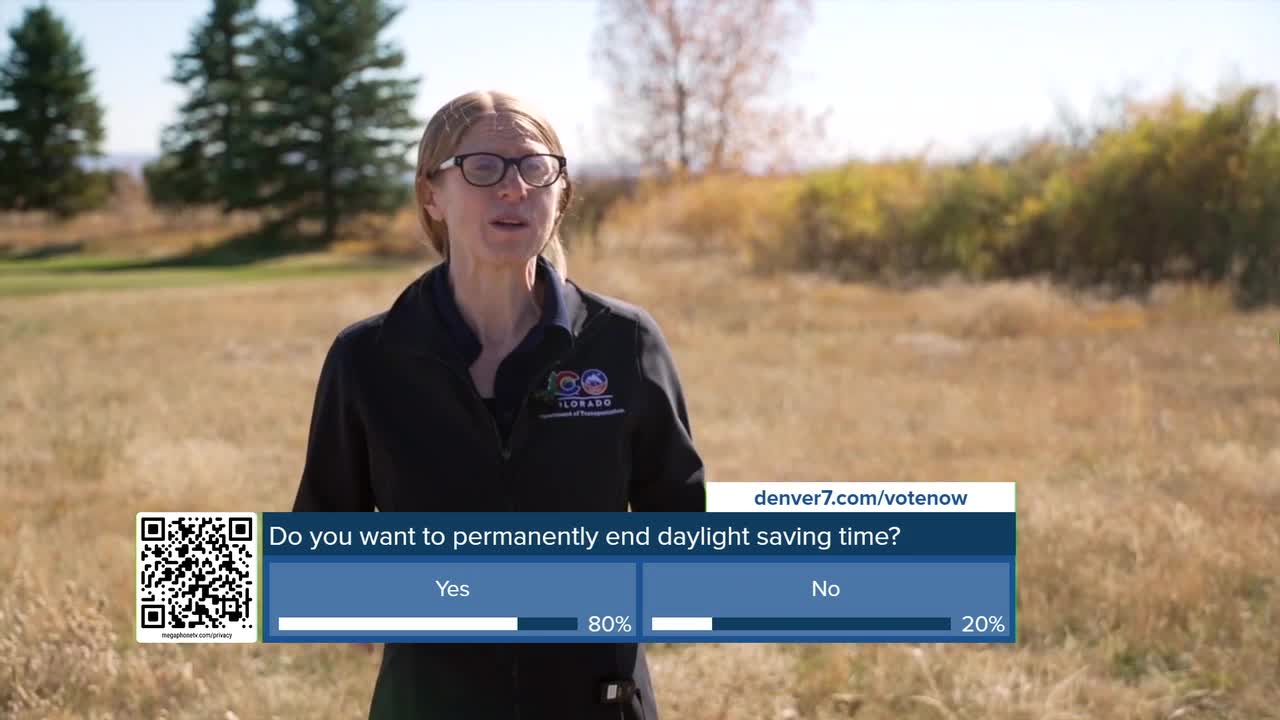LITTLETON, Colo. — With trick-or-treaters on the streets and clocks set to roll back this weekend, experts warn drivers to be extra vigilant because the change to standard time, combined with seasonal weather shifts, raises the risk of hazards on the road.
“Now is a really important time for people to just be aware that there are some increased public safety risks when you’re on the roads here in Colorado,” Danny Kats, executive director of the Colorado Public Interest Research Group, said at a press conference on Thursday in Littleton near C-470.

Collisions with deer rise 16% in the week after the time change, according to Environment Colorado. Rachel Jaeger, an associate with the group, said the shift moves peak traffic and rush hour into dusk and early evening when deer and other animals are most active.
“Their internal clocks don’t change just because we change our external clocks,” Jaeger said. “They'll be out and active whenever they typically prefer to which is those early evening hours.”
Jaeger also said drivers are 14 times more likely to hit a deer in the two hours after sunset than in the two hours before, and that most wildlife-vehicle collisions in Colorado involve deer. From 2010 through 2024, La Plata County recorded the most collisions, followed by Douglas County and Jefferson County.
Colorado Department of Transportation (CDOT) Executive Director Shoshana Lew stressed that infrastructure can dramatically reduce crashes.
“A properly placed wildlife crossing can reduce these collisions by as much as 90 percent,” Lew said. “We have cameras in place where we can actually see the density of animals utilizing these structures. They do use them, and they really are effective in terms of managing these hot spots where we know that the collisions can occur.”

Colorado has 75 wildlife crossings in service with more projects underway, including the Greenland Wildlife Crossing, which is under construction on Interstate 25 near Monument. It’s slated to open later this year as the largest wildlife crossing in the world.
While crossings paired with wildlife fencing are shown to be effective, Lew urged drivers to remember that most roadways are exposed to wildlife.
“We love living amongst nature, and we have to drive in a way where we know that our neighbors are not just other drivers, but the animals who reside here as well,” Lew said.
Officials also warned that sudden weather changes increase hazards this time of year. Snow is already falling in the mountains, and it can arrive quickly along the Front Range.
Safety recommendations include avoiding distractions, using headlights, reducing speed and increasing following distance, especially around sunrise and sunset. Drivers should look for the bright, reflective eyes of animals along the side of the road and use public transit whenever possible.






